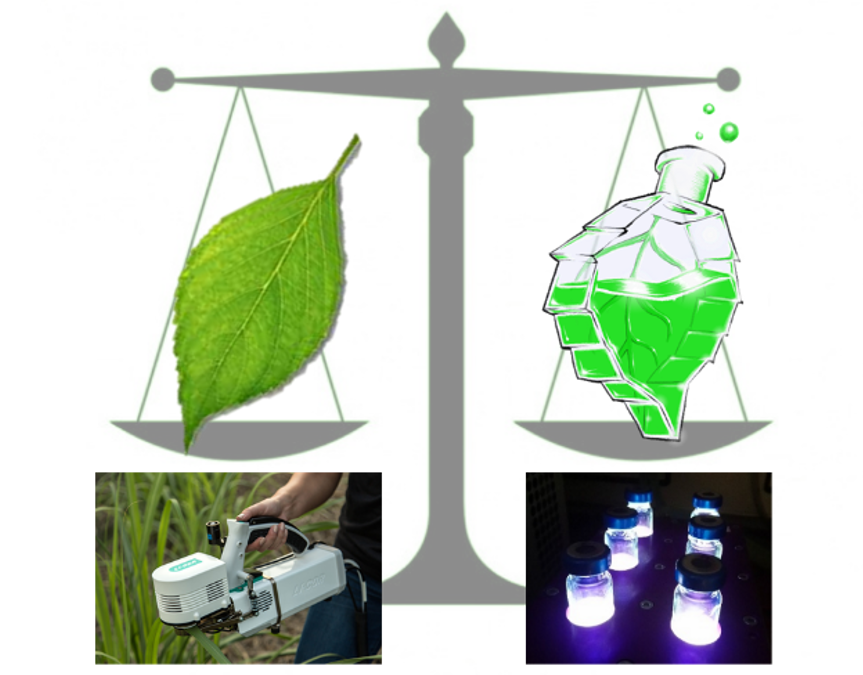Benchmarking artificial photosynthesis by comparing it to natural photosynthesis

Global warming and climate change are among the major environmental issues nowadays. One of the causes is the increased concentration of CO2 in the atmosphere. Forests are able to consume 7.6 billion metric tons of CO2 each year via natural photosynthesis; nevertheless, the carbon cycle remains unbalanced because of human activities. Artificial photosynthesis products, such as methane, methanol or carbon monoxide, and molecular hydrogen, have a high potential for a successful transition toward renewable energy sources. However, artificial photosynthesis is still emerging, and knowledge of the entire process's efficiency and environmental footprint is limited. Dr. Somidh Saha and Dr. Claudia Bizzarri have thought about a challenging project to answer the following question: How sustainable is artificial photosynthesis in reality? Surprisingly, there are very few experiments where natural photosynthesis was used as a direct benchmark to evaluate artificial photosynthesis efficiency.
Claudia is an organic chemist with a fondness for photochemistry. She has worked on the design and fully characterizing new coordination metal complexes that are photoactive in regard to the CO2 reduction to other reactive molecules. In particular, she is committed to working only with earth-abundant materials (not rare and expensive metals) to approach a sustainable way of closing the carbon cycle. Thanks to the YIN grant, Claudia’s team have tested some known and some new metal complexes in their role as photocatalysts for the reduction of CO2 to give CO. Their performance was evaluated under different light sources and in prototype reaction conditions under a solar simulator, to reproduce the light conditions for the natural photosynthesis.
Somidh is a forest ecologist fascinated by trees' smartness and capacity to efficiently utilize light, water and soil nutrients in natural forest ecosystems and artificial urban forests. Therefore, one of his research interests is how the photosynthesis of different tree species reacts to light; for example, he and colleagues showed that oak (Quercus petraea) saplings could maximize their photosynthetic capacity or rate of carbon assimilation when they get at least 50% of solar radiation which requires a gap size of 0.2 ha in forests4. In 2021, Somidh’s team studied light conditions in forest change after a forest fire and how increasing levels of solar radiation influence photosynthetic capacity and quantum use efficiency. This study could not be possible without the YIN grant from which Somidh’s team could buy sensors for measuring light availability during photosynthesis experiments. Somidh’s team also tested natural photosynthesis in controlled laboratory conditions on fast-growing plant species such as sorghum to test how photosynthetic capacity and quantum efficiency changed along with light availability with the support from the YIN grant.
This pilot project proved to be highly interdisciplinary. As the time schedules of the experiments in the lab and in the field are very different, Claudia and Somidh have been preparing a protocol for evaluating the synthetic photocatalytic approach compared to natural photosynthesis.
Currently, the data collected from the synthetic approach are under evaluation in the life-cycle assessment. Moreover, Claudia’s team is developing new photocatalytic systems in water. Somidh’s team is now doing a comparative analysis of photosynthesis performance data collected from oak and sorghum plants. Learning and biomimicking from natural photosynthesis will help us benchmark the

